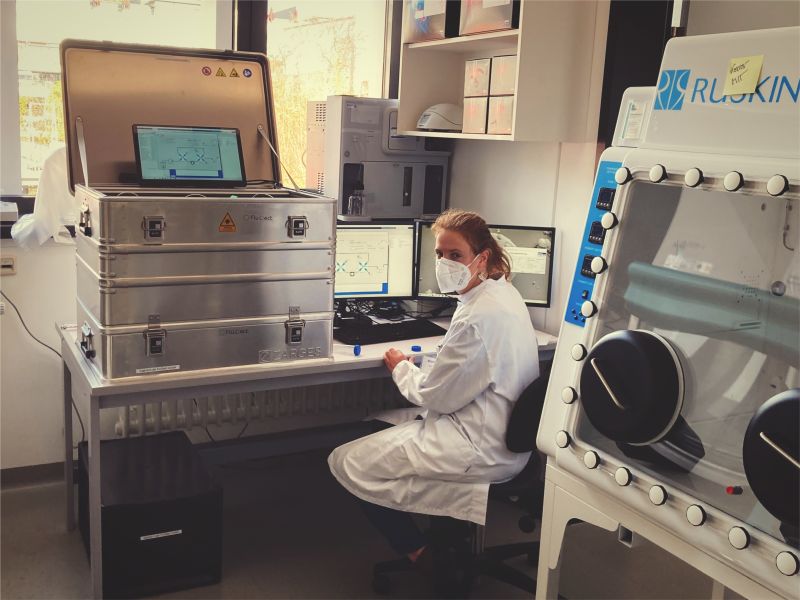With the commissioning of our fluorescence resonator signature (FRS) instrument in the S2 laboratory, we have reached an important milestone. The housing is still simple and bulky, but it is the inner values that count. Fluorescence resonator signature (FRS) technology uses surface-functionalized microparticles as sensors that can move freely in a liquid sample to actively “search” for microorganisms. The microparticles are then read optically to provide information about the type and quantity of microorganisms. Thus, the technology offers significant advantages over state-of-the-art technologies such as Surface Plasmon Resonance (SPR), particularly in terms of time to result and sensitivity.
Over the next few months, we will be testing various components of the instrument in the laboratory, working with different live bacteria in analytes such as water, wastewater, yeast extract, and raw milk, before moving on to initial pilot applications next year with an improved version of the instrument.
We especially thank SPRIND – Bundesagentur für Sprunginnovationen for their support and the Universitätsklinikum Jena for the opportunity to use the S2 laboratory. Many thanks also to the Digital Innovation Hub Photonics (DIHP), Leibniz-Institut für Photonische Technologien, PhotonHub and the Vrije Universiteit Brussel for their support in the further Hashtag#development of the individual components.

